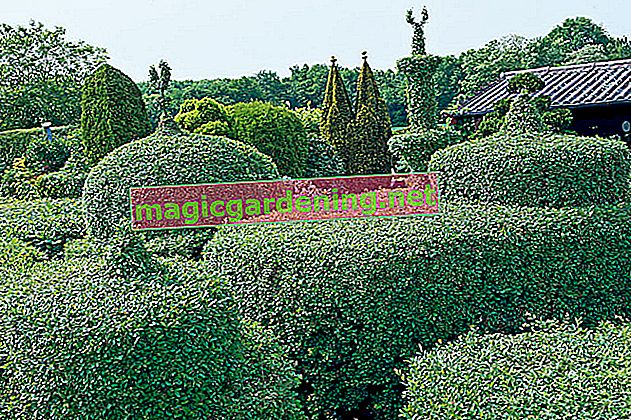
Rescue or dig up infested boxwood?
Box tree moth and other pests eat infested trees and bushes bare within a very short time. There seem to be hardly any countermeasures or, in many cases, only take effect for a very short time. Especially when it comes to saving flower beds and other box tree hedges, it becomes difficult: for example, collecting the caterpillars is almost impossible with so many densely planted plants, so that the pressure of infestation can hardly be contained. Not every gardener wants to constantly deal with toxic chemical agents in the garden - completely understandable. The only alternative is often the permanent removal of the box.
also read
- Do you really have to support the "Annabelle" hydrangea?
- Removing boxwood - This is what you should pay attention to
- It is better not to fertilize boxwood with blue grain
Plant alternatives
In order to contain the damage from the outset, you should resort to resistant boxwood species and varieties such as 'Herrenhausen', 'Arborescens', 'Faulkner' and 'Elegantissima'. These are also attacked, but much less often than more sensitive Buxus such as' Blauer Heinz ',' Suffruticosa ',' Handworthiana ',' Raket 'and Rotundifolia'. If you want to be on the safe side, choose substitute plants from other, similar species such as
- Japanese holly (Ilex crenata)
- Shiny honeysuckle (Lonicera nitida)
- Privet (e.g. Ligustrum vulgare 'Lodense')
- Barberry (e.g. Berberis buxifolia 'Nana' or 'Kobold')
- Arborvitae (e.g. Thuja occidentalis 'Teddy')
How to remove unwanted box
Buchs is a very pruning-compatible plant that sprouts again and again. At the same time, the shallow root is difficult to remove because its roots grow very broadly branched. Of course, it's best to completely dig up the plants, including their roots. However, if you cannot or do not want to do this work yourself, these measures are also effective:
- In midsummer, cut the box to just above the ground.
- Dispose of infected clippings in airtight packaging with household waste.
- Never compost it or dispose of it in the organic waste bin.
- Cover the interfaces with weed film or bog soil or fertilizer.
- Buchs only likes high pH values and will sprout less here.
- Always cut off or pull out any shoots.
- After a year, the book problem should be over.
Tips
In locations where a fungal disease or a pest such as the boxwood moth has already occurred, no new boxwood plants should be planted for at least four years.








